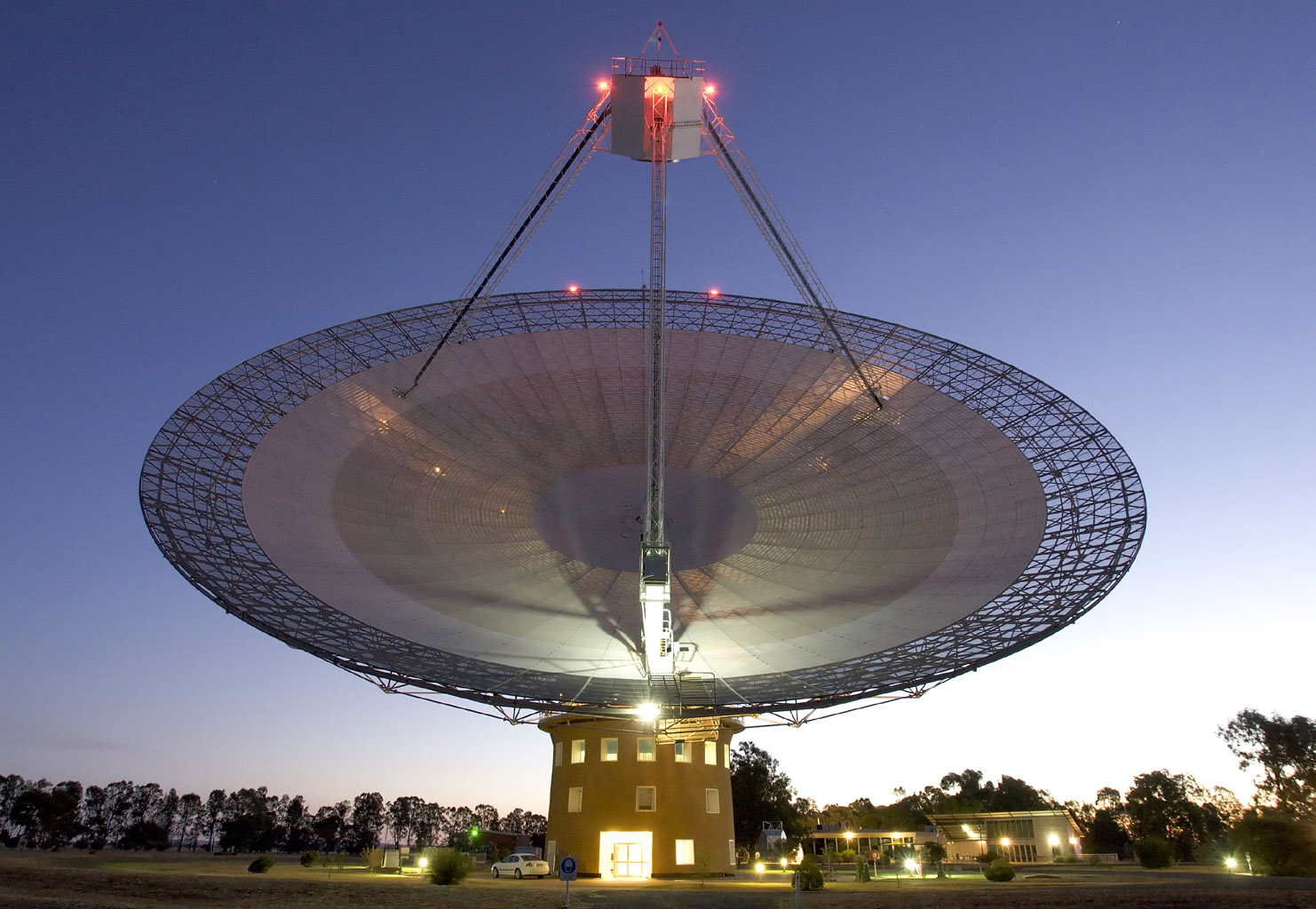The Breakthrough Listen project is making its digital recorder backend at the CSIRO Parkes Radio Telescope available for a minimum of 50 hours of shared-risk observations each semester. The instrument consists of a cluster of 26 NVIDIA 1080 GPU-based servers capturing 8-bit voltage-level data products across the full bandwidth of the Ultra-wideband receiver (0.7-4.0 GHz), and for the 21-cm multibeam receiver, across 308 MHz of bandwidth per beam (13x308 MHz dual pol).

CSIRO Parkes Radio Telescope. Image credit: CSIRO/Shaun Amy
Data rates are typically tens of TB / hr but a pipeline is available to generate spectra with adjustable frequency (> 3 Hz) and time (> us) resolutions, with possible science applications including fast radio transients, pulsar observations, stellar flares, SETI, etc.
Observations are currently routinely conducted with the multibeam receiver, and support for the ultra-wideband receiver is forthcoming. The Breakthrough Listen team runs dedicated observations for 25% of the time on Parkes, typically in 11-hour long runs. The telescope is controlled using TCS scripts. The Listen backend is launched from a simple command line call on our head node and begins streaming the raw voltages to disk on our compute nodes.
For most Listen observations, we generate and archive filterbank files with 2% of the volume of the raw data, before deleting the raw voltages from disk. In certain circumstances we retain the raw voltages for more detailed analysis.
Guest observers wishing to use the Breakthrough Listen backend may choose to run their raw data through the GPU-based spectroscopy pipeline on our hardware before transferring a few TB of reduced files offsite over the internet. Observers who wish to retain raw voltages will need to provide their own storage solution, and should contact us to discuss a data retention and transport plan.
Long observations should be split into runs lasting no longer than 8 hours, with at least 24 hours between runs.
Potential users should familiarize themselves with the capabilities of the instrument by reading the instrument description paper, Price et al. (2018), available on arXiv and published in PASA.
Before submitting a proposal, proposers must obtain permission from the Breakthrough Listen team at Berkeley SETI Research Center. If you are interested in proposing, please email Danny Price (dancpr [at] berkeley.edu) and copy David MacMahon (davidm [at] berkeley.edu) with an outline of your planned observations. MacMahon and Price should be added as co-Is to proposed observations, to enable them to keep track of use of the instrument and to provide appropriate technical support. Publications resulting from use of the Listen instrument are not required to include members of the Listen team as co-authors (although they are welcome to do so as appropriate) but are requested to cite Price et al. (2018).
The team at Berkeley will consult on proposal preparation and data analysis. Any data acquired using the backend will be proprietary to the proposer per the standard Parkes policies. Successful proposals will be allocated time from the Parkes general observer pool, not from the dedicated Breakthrough time. Proposers are not required to share their data with the Listen team, but where observations suitable for a piggyback SETI search are obtained the team would welcome the opportunity to run their pipeline on the data at the proposer's discretion.